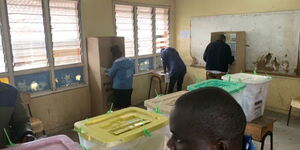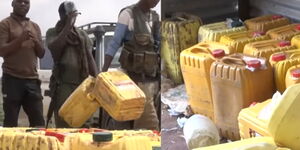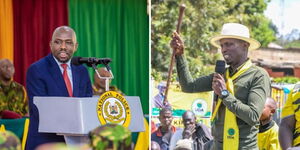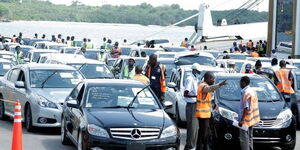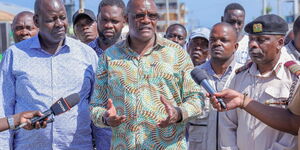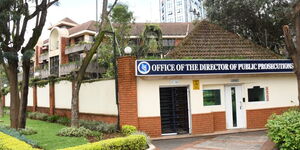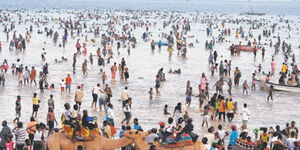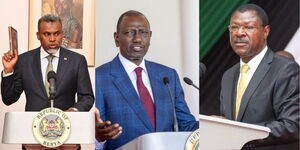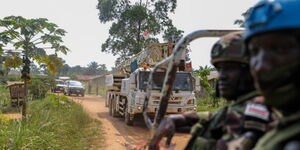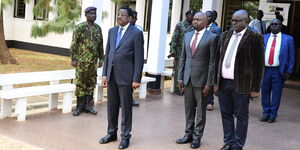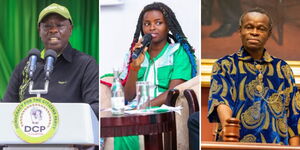Raila Odinga's fifth stab at the presidency was marred by confusion that stemmed from the political vehicle, Azimio la Umoja One Kenya, that was touted as his best bet at the country’s top seat.
With political pundits indicating that it was his last shot at the Commander-in-Chief of the armed forces post, the former Prime Minister failed to recognise glaring errors and blunders that would eventually derail his ambition.
A day before the August 9 General Election, opinion polls showed that Raila was heading for a first-time win, trouncing his main competitor, Deputy President William Ruto.
But on the ground, Azimio - which President Uhuru Kenyatta is among the top leaders - failed to catapult Raila to State House.
Political Parties Pull Out of Azimio
Azimio la Umoja was conceived to transform the country's political discourse. However, its formation was flawed.
Some member parties of the coalition claimed that they were being sidelined and treated like outsiders by the bigger parties. Some claimed that they were being pushed to sign a document they had not seen.
The push and pull compelled Maendeleo Chap Chap party leader Alfred Mutua to bolt out. The Pamoja African Alliance (PAA) party associated with the outgoing Kilifi Governor Amason Kingi also followed suit.
The two parties would later join Deputy President William Ruto’s Kenya Kwanza, seemingly struggling at the time and needed numbers.
The Running Mate Debacle
Before settling on Narc Kenya’s Martha Karua as his running mate, Raila Odinga was engaged in a pull and push with several leaders who wanted to be picked to deputise him.
Wiper Party leader, Kalonzo Musyoka, ditched the coalition after Raila settled on Karua and announced his presidential bid. He picked businessman Andrew Sunkuli as his running mate.
Despite dropping his presidential bid, the opponents capitalised on his indecisiveness to sway the electorates from the Ukambani region.
According to tallied votes from the Independent Electoral and Boundaries Commission (IEBC), Ruto garnered 242,187 votes in Makueni, Kitui and Machakos, equivalent to 25 per cent.
Kalonzo did not hit the 100 per cent mark delivery to Raila as promised, only delivering 75 per cent of the votes, translating to 769,422 votes. This is a pledge he made after returning to Azimio.
Flawed Messaging
While Azimio la Umoja had a well-planned campaign roadmap, the messaging throughout the period did not resonate with most of the voters.
Unlike Kenya Kwanza which had synchronised its messaging to ensure that it resonated with the voters of every region it campaigned in, Azimio la Umoja capitalised on one message that did not address the specific issues faced by respective regions.
At the same time, unlike Kenya Kwanza which pegged all its campaigns on reviving the economy with the Bottom Up economic model, Azimio's message did not stand out.
The only conspicuous campaign message of the Raila Odinga campaign was the Ksh6,000 pledge to the vulnerable families.
Although the fight against graft also stood, Azimio was accused of not outlining how it intended to address the menace.
Mobilisation of Voters
According to political analysts, Azimio had better chances of winning the presidency in round one by a huge margin but tactical failure in mobilisation of voters saw Raila fail to clinch the presidency the fifth time.
On the other hand, Ruto’s Kenya Kwanza capitalised on grassroots mobilisation by doing door-to-door campaigns in areas perceived as his strongholds, including Mount Kenya and the Rift Valley.
In Mt Kenya, Raila used his running mate to try to sway the voters to his side. However, this strategy did not work as expected neither did the Jubilee Legislators from the region deliver as per the expectations.
Raila’s over reliance on Uhuru's influence to infiltrate the Mountain was also miscalculated.
Failure to Deploy Enough Agents
During the voting day, it is a tradition for every political party and candidate to deploy candidates to all polling stations in the area they are contesting in.
According to insiders, the pull and push in Azimio saw Raila fail to send enough agents to polling stations and especially in the vote-rich Mount Kenya and Rift Valley regions.
The failure by Raila’s faction to send enough agents may have cost him the presidency as there was nobody to guard his votes against any malpractices.
The glaring mistakes and confusion cost Raila's chance to become Kenya's fifth President.

